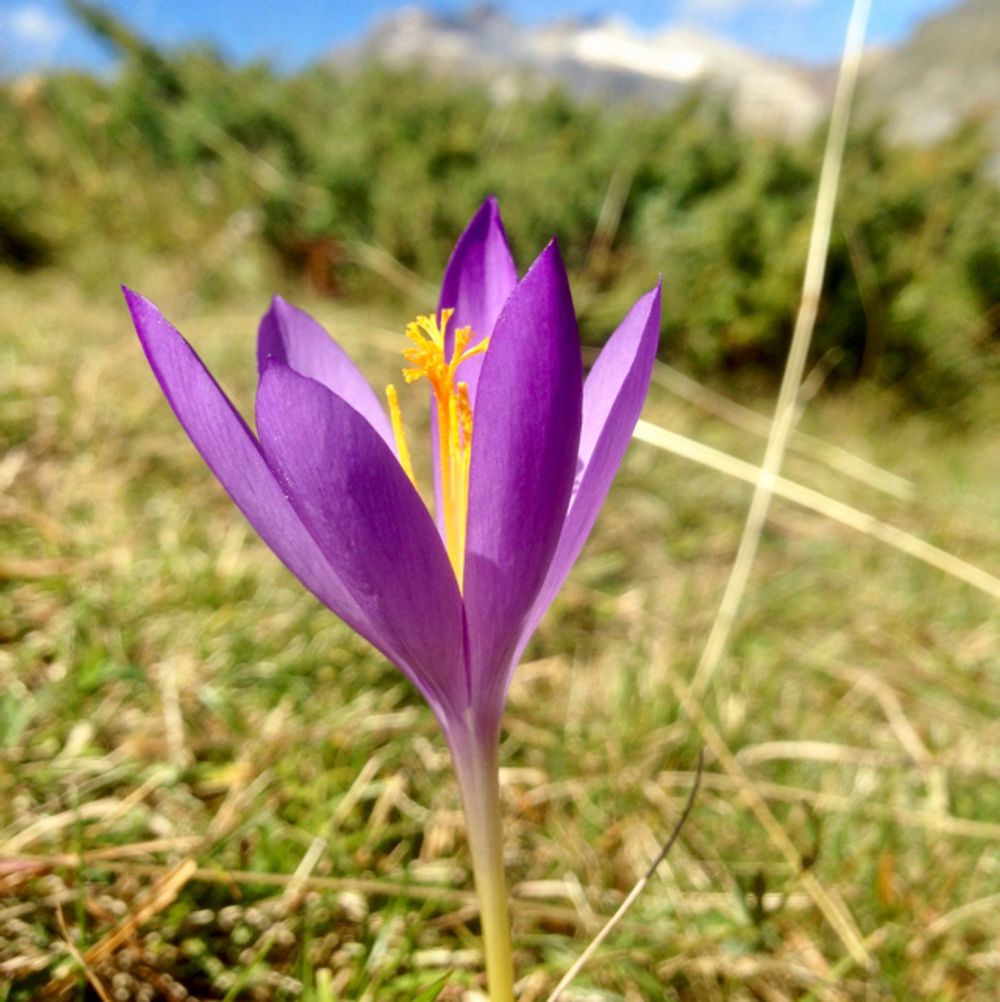Golden crocus
(Crocus chrysanthus)

Description
“Pet poisonous” – Toxic parts: entire plant Crocus chrysanthus is a flowering plant belonging to the Iridaceae family. It is commonly known as the golden crocus or snow crocus, due to its bright yellow flowers. This plant is native to southern Europe, Turkey, and the Caucasus region. Crocus chrysanthus is a small, herbaceous perennial plant that grows from corms and produces beautiful blooms in late winter and early spring. It is a popular ornamental plant and is widely grown in gardens and parks for its attractive flowers. Taxonomy: The scientific name of Crocus chrysanthus is derived from the Greek word krokos, which means saffron, and the Greek word chrysos, which means gold. The plant belongs to the genus Crocus, which comprises approximately 90 species of flowering plants. Crocus chrysanthus is classified under the subgenus Crocus, which is characterized by its large flowers and showy stamens. Description: Crocus chrysanthus is a small plant that grows to a height of 10 to 15 centimeters. It has a globular corm, which is a bulb-like structure that stores nutrients for the plant's growth. The leaves of the plant are narrow and grass-like, growing up to 15 centimeters long. The flowers of the plant are solitary and emerge from the corm in late winter or early spring. They are typically bright yellow in color, although some cultivars may have white or purple flowers. The flowers have six petals and are cup-shaped, with a diameter of 3 to 6 centimeters. The plant produces one or two flowers per corm, which bloom for about two weeks before fading. Habitat: Crocus chrysanthus is native to southern Europe, Turkey, and the Caucasus region. It has also adapted to mountainous regions of the United States. It grows in rocky and stony areas, as well as in open woodland and meadows. The plant prefers well-drained soil and is adapted to a Mediterranean climate, with hot, dry summers and mild, wet winters. Cultivation: Crocus chrysanthus is a popular ornamental plant and is widely grown in gardens and parks for its attractive flowers. The plant is propagated by corms, which should be planted in the autumn, about 8 centimeters deep and 10 centimeters apart. The plant prefers full sun to partial shade and well-drained soil. It is tolerant of drought and can survive in dry conditions, although it requires regular watering during the growing season. Garden crocus is hardy and can tolerate temperatures down to -15 degrees Celsius. Crocus chrysanthus can be grown in containers or in the ground and is suitable for rock gardens, borders, and naturalized plantings. Uses: Crocus chrysanthus is primarily grown for ornamental purposes, as it produces attractive flowers in late winter and early spring. The plant is often used in rock gardens, borders, and naturalized plantings, where it adds color and interest to the landscape. The plant is also sometimes used for medicinal purposes, as it contains compounds that have been shown to have anti-inflammatory and antioxidant properties. Additionally, the plant is sometimes used in traditional medicine to treat a range of ailments, including fever, headaches, and menstrual cramps. Conclusion: Crocus chrysanthus is a beautiful and hardy flowering plant that is popular with gardeners and plant enthusiasts. Its bright yellow flowers, which bloom in late winter and early spring, add color and interest to the landscape. The plant is easy to grow and is suitable for a range of garden settings. Additionally, the plant has some medicinal uses and contains compounds that have been shown to have anti-inflammatory and antioxidant properties.
Taxonomic tree:







